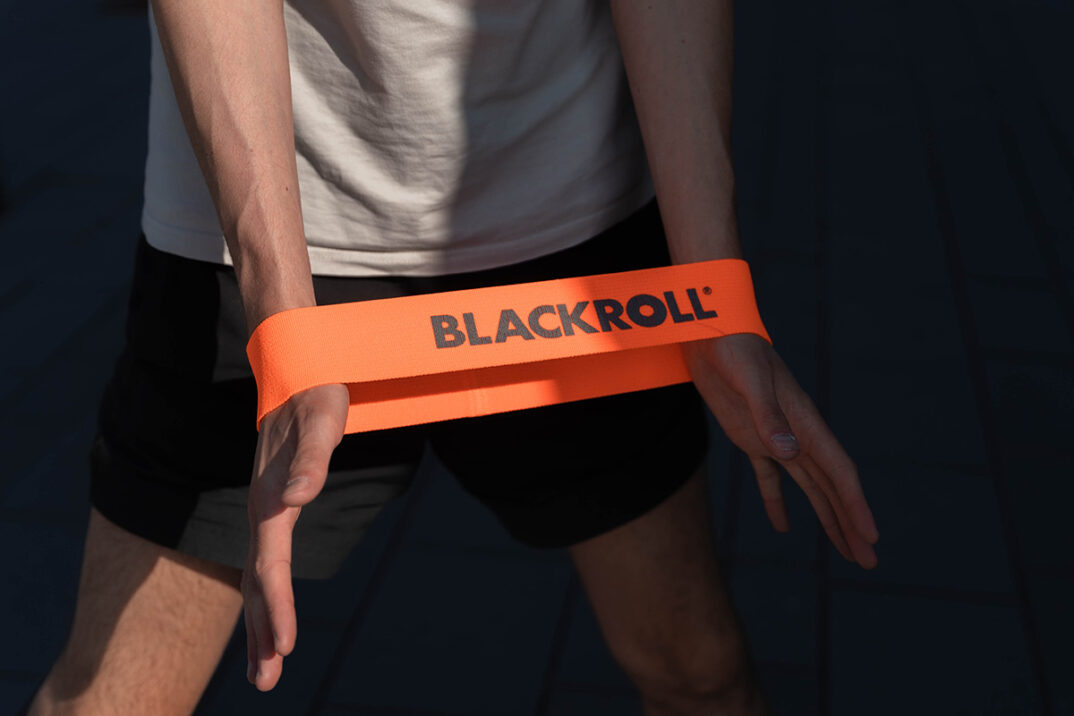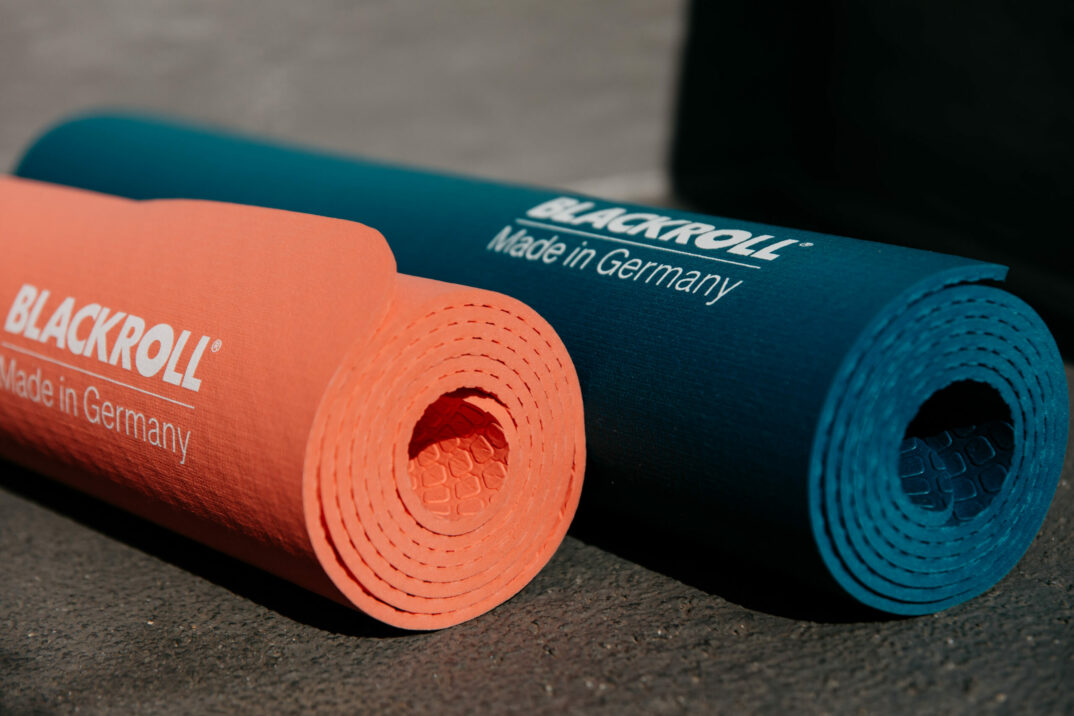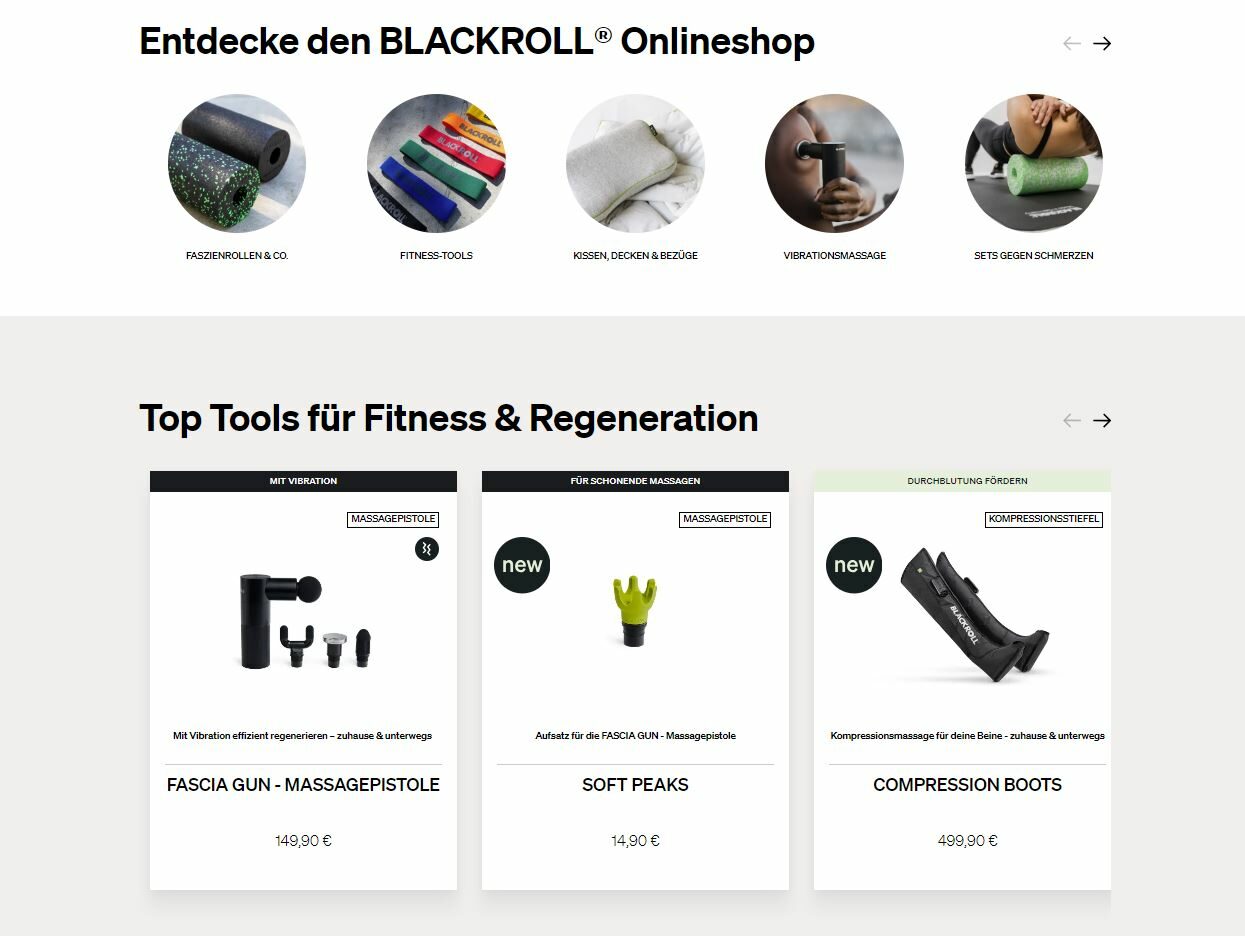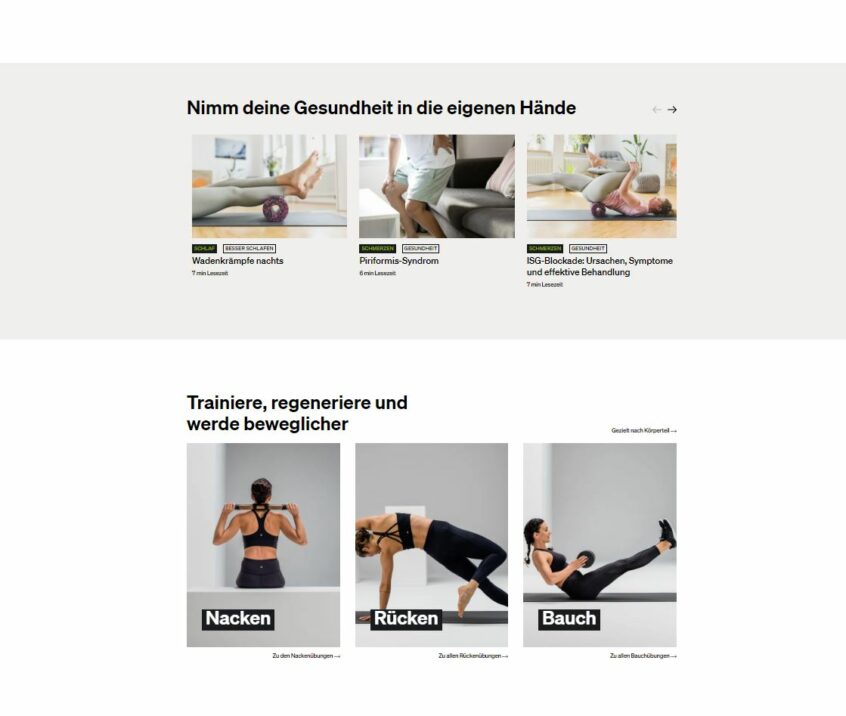From retail to e-Commerce expert
How BLACKROLL professionalized its e-business
BLACKROLL sells 500,000 products annually through its online stores and attracts more than a million active users to its website each month. What few know is that behind the success of the digital sales channels is a highly scalable headless e-commerce system based on Shopify. With this modular architecture and a clear omnichannel strategy, BLACKROLL demonstrates how to make the leap from retail to e-commerce player.

The Success Story in a nutshell
Growing e-business currently generating 40% of total revenue through Direct-to-Consumer (D2C) sales.
Development and professionalization of digital sales channels.
Implementation of the Shopify platform as a Software-as-a-Service (SaaS) solution.
Setting up a headless frontend for maximum freedom in storefront design.
Gradual development of a microservices architecture with interchangeable system components.
Consistent Customer Experience (CX) by linking all digital touchpoints and content streams (website, online shop, BLACKROLL App & Academy).
About the brand BLACKROLL
Fitness coaches and top athletes rely on BLACKROLL; a brand that has mandatory in many home gyms: With the fascia roller, BLACKROLL has established its own product category and made a name for itself internationally. In just a few years, the company from Switzerland has grown into a Healthstyle Company with 60 employees and distributors worldwide. Today, the BLACKROLL brand not only stands for the fitness but also for a wide range of products that contribute to active and passive regeneration. With a steadily growing range of products, BLACKROLL has increasingly targeted end consumers.
The challenge

Getting closer to the end consumer
Until just a few years ago, BLACKROLL primarily addressed trade partners such as sports stores, gyms, medical supply stores, and physiotherapy practices through indirect sales models. To date, the D2C business accounted for only about 10 percent of revenue. That was set to change: By expanding digital channels and professionalizing its e-business, BLACKROLL aimed to move closer to the end customer.
Diversification of the product world
The diversification of the product range went hand in hand with the diversification of sales channels. The different use cases and functions of the products were to be reflected in the design of the website.
Linking various content streams
In addition to the product catalog and shop, the website blackroll.com includes an extensive content hub with instructions, exercises, and application tips. The different content areas and channels were to be systemically separated to have the flexibility to merge these streams again easily.

Freedom in storefront design
BLACKROLL pursued the desire to solve new requirements through APIs and to gain the highest degree of adaptability with modular, interchangeable components. Limitations regarding the frontend design and connected services were to be minimized as much as possible.
Omnichannel sales with channels working in parallel
Starting in 2019, BLACKROLL began to build a more professional direct sales approach through all digital channels. This process required a team with the right competencies in various areas. Especially downstream steps such as customer service, after-sales, and fulfillment needed adjustments to operate in an omnichannel context.
Internationalization & integration of additional sales channels
To enable future expansion into additional markets and to integrate more platforms for new devices and target audiences, the scalability of the online business was considered early on, even in an international context.
The solution
Shopify as SaaS
When establishing the B2C shop back in 2015, BLACKROLL chose the Shopify platform because it allowed for quick and low-barrier initial steps and applications. The platform also offered ideal conditions for the goal of expanding the digital channels over the coming years: The wide range of Shopify apps inherently provided a high level of flexibility and openness for extensions. In the Shopify Marketplace, there are corresponding plugins for many cases and requirements, such as integration with marketplaces and checkout processes. Thus, BLACKROLL can also implement marketing campaigns, analyses, and automations through app installations with minimal development effort. To this day, Shopify remains at the heart of the e-commerce landscape, running as a Software-as-a-Service (SaaS) in the background.

Headless Frontend
With respect to the long-term strategic development goals, a headless frontend represented the next logical step. Therefore, in 2021, the headless shop went live. Since then, all product and category pages, as well as the content area, have been separated from the e-commerce processes and are managed through the headless frontend. In the backend, the order and checkout processes continue to run via Shopify.

Microservices architecture
Gradually, BLACKROLL built a microservices architecture with modular system components, where each component is theoretically interchangeable and can be connected via an API. A gateway ensures the smooth communication of all microservices. Thus, the system landscape has developed into a MACH architecture (Microservices, APIs, Cloud-native, Headless) over time, and in many respects, it corresponds to what is known as Composable Commerce.
Serverless Hosting
At BLACKROLL, the storefront operates via separate, outsourced servers and a Content Delivery Network (CDN). Whether 10 or 1,000 users access the website and shop simultaneously, the serverless hosting contributes to low latency and high scalability. Despite the increasing complexity of the content and data models, consistently high performance and minimal limitations in the backend are ensured.
The implementation
Operationally, BLACKROLL has outsourced the majority of its technical infrastructure. For years, the company has relied on collaborations with IT partners such as valantic, which bring in the necessary skills and experience in specific areas, such as architectural development.
valantic advises and supports BLACKROLL, for example, in the development and performance improvement of existing systems. This includes tasks related to interfaces, authentication, and user data, as well as monitoring and testing, but also planning questions: How are things implemented? How are services integrated anew?
Advantages of the headless architecture
With the headless architecture, BLACKROLL has gained maximum flexibility in designing the storefront. The frontend is technology-independent and can be assembled without templates.
The technology independence of the frontend has positive effects on performance and stability. Since a large part of the business logic is controlled via APIs, BLACKROLL benefits from serverless hosting “at the edge.”
The modular principle creates ideal conditions for the easy integration of additional applications and functions. With the headless architecture, new modules, apps, and services can be docked without making changes in the Shopify backend.
Images, videos, and content APIs are provided across multiple Content Delivery Networks (CDN) and optimized for the respective browser or device.
The microservices architecture also allows for flexible scaling internationally. Thanks to the expandable modules, the system landscape grows with the brand’s requirements.
What’s next?
BLACKROLL looks at the development of e-commerce systems and omnichannel strategy as a continuous process. valantic will continue to support the brand strategically and technologically in operational processes and long-term goals. These goals include further strengthening and expanding the D2C business. Another objective is to approach the B2B shop more structurally, which is currently run separate from the headless architecture. Additionally, the brand intends to focus more on international cases and drive shop launches in other markets. An ongoing development theme is also personalization: The diverse product world offers numerous possibilities for personalized customer communication with high-quality content and individual recommendations.

Interview: From Lake Constance to home gyms worldwide
Learn more about BLACKROLLs sophisticated online business in our exclusive interview with Mirko Mandic, Circle Lead E-Commerce at Blackroll.
